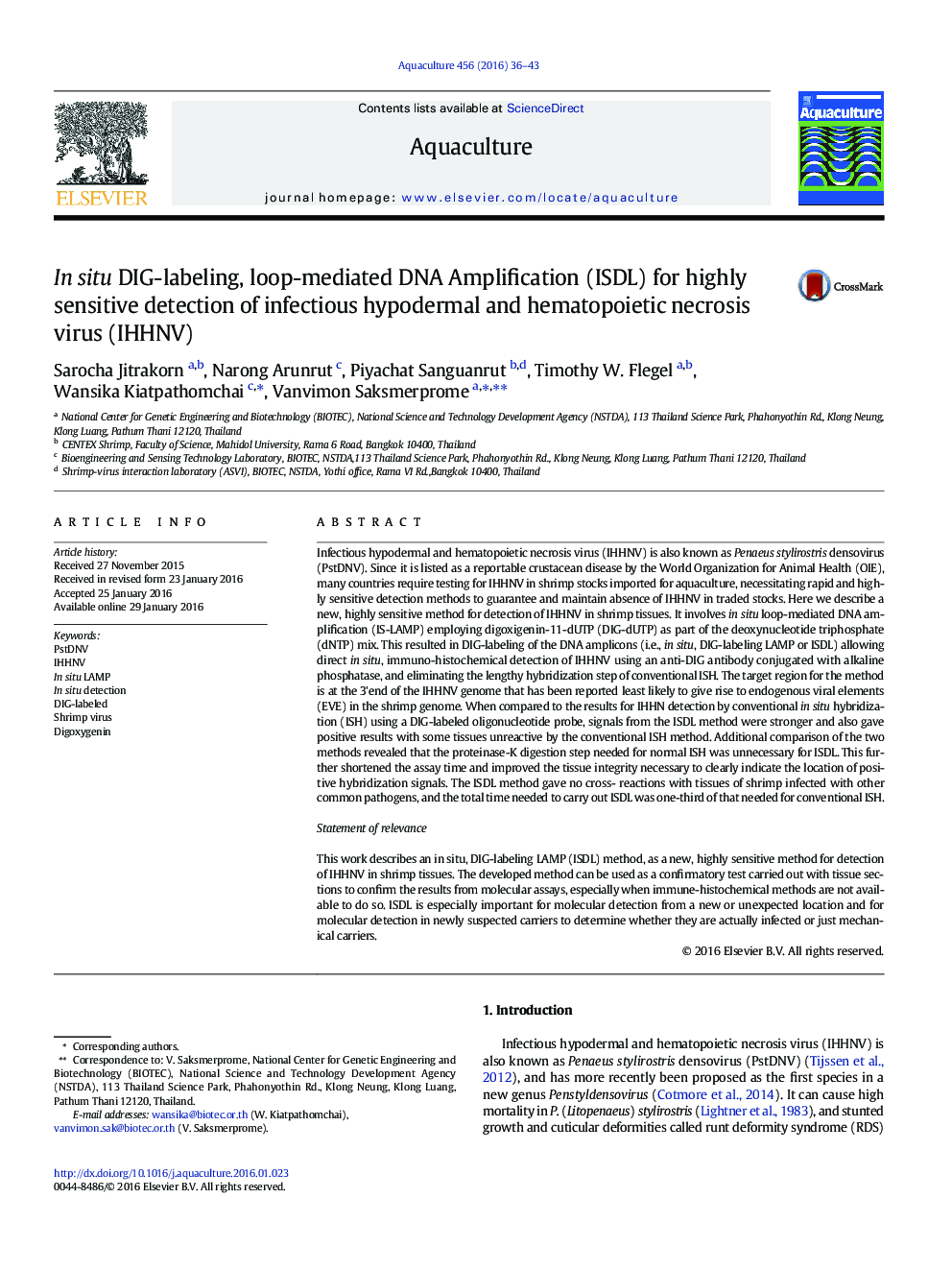| کد مقاله | کد نشریه | سال انتشار | مقاله انگلیسی | نسخه تمام متن |
|---|---|---|---|---|
| 2421467 | 1552831 | 2016 | 8 صفحه PDF | دانلود رایگان |

• ISDL is a highly sensitive method for IHHNV detection in shrimp tissues.
• ISDL gave no cross-reactions with tissues of shrimp infected with other pathogens.
• The total time used in ISDL was one-third of that needed for conventional ISH.
• Proteinase-K digestion step needed for normal ISH was unnecessary for ISDL.
Infectious hypodermal and hematopoietic necrosis virus (IHHNV) is also known as Penaeus stylirostris densovirus (PstDNV). Since it is listed as a reportable crustacean disease by the World Organization for Animal Health (OIE), many countries require testing for IHHNV in shrimp stocks imported for aquaculture, necessitating rapid and highly sensitive detection methods to guarantee and maintain absence of IHHNV in traded stocks. Here we describe a new, highly sensitive method for detection of IHHNV in shrimp tissues. It involves in situ loop-mediated DNA amplification (IS-LAMP) employing digoxigenin-11-dUTP (DIG-dUTP) as part of the deoxynucleotide triphosphate (dNTP) mix. This resulted in DIG-labeling of the DNA amplicons (i.e., in situ, DIG-labeling LAMP or ISDL) allowing direct in situ, immuno-histochemical detection of IHHNV using an anti-DIG antibody conjugated with alkaline phosphatase, and eliminating the lengthy hybridization step of conventional ISH. The target region for the method is at the 3'end of the IHHNV genome that has been reported least likely to give rise to endogenous viral elements (EVE) in the shrimp genome. When compared to the results for IHHN detection by conventional in situ hybridization (ISH) using a DIG-labeled oligonucleotide probe, signals from the ISDL method were stronger and also gave positive results with some tissues unreactive by the conventional ISH method. Additional comparison of the two methods revealed that the proteinase-K digestion step needed for normal ISH was unnecessary for ISDL. This further shortened the assay time and improved the tissue integrity necessary to clearly indicate the location of positive hybridization signals. The ISDL method gave no cross- reactions with tissues of shrimp infected with other common pathogens, and the total time needed to carry out ISDL was one-third of that needed for conventional ISH.Statement of relevanceThis work describes an in situ, DIG-labeling LAMP (ISDL) method, as a new, highly sensitive method for detection of IHHNV in shrimp tissues. The developed method can be used as a confirmatory test carried out with tissue sections to confirm the results from molecular assays, especially when immune-histochemical methods are not available to do so. ISDL is especially important for molecular detection from a new or unexpected location and for molecular detection in newly suspected carriers to determine whether they are actually infected or just mechanical carriers.
Journal: Aquaculture - Volume 456, 1 April 2016, Pages 36–43